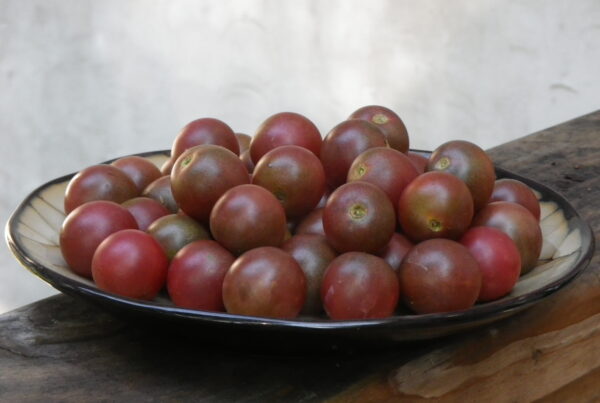On May 18, 30 Republican Representatives joined 183 Democrats to defeat HR 2, the Agriculture and Nutrition Act of 2018 (aka the House Farm Bill) 198 to 213. The National Sustainable Agriculture Coalition (NSAC) welcomed the failure of this “toxic bill,” which would have terminated the Conservation Stewardship Program, defunded key rural development and local foods programs, thrown 2 million food-insecure Americans off the SNAP (food stamps), and given mega farms essentially unlimited access to USDA commodity and crop subsidies.
NSAC would like to thank everyone who called their Representatives to register their concerns and opposition to HR 2, a nationwide grassroots action that no doubt helped to kill the bill.
However, some of the Republican “nay” votes were cast, at least in part, as a way to get the House to first address another legislative issue they consider even more urgent: immigration. Once this happens, the House majority leadership will likely bring HR 2 back to the floor for consideration “as is.” Should this happen, we will need a second grassroots call-in campaign to send this “anti-family-farm bill” back to Committee and demand, in the words of NSAC writer Reana Kovalcik, “a strong, bipartisan bill that works for small and mid-sized family farmers, strengthens rural communities, and protects our shared natural resources.”
Senate Committee Drafts a Much Better Farm Bill
The Senate has taken an important step in this direction. On June 13, the Senate Agriculture Committee, led by Chair Pat Roberts (R-KS) and Ranking Member Debbie Stabenow (D-MI), passed its version of the 2018 Farm Bill, to be debated and voted by the full Senate within the next two weeks. The Senate Farm Bill clearly reflects a bipartisan effort in good faith, and includes many of the top NSAC priorities. See NSAC’s June 13 statement at http://sustainableagriculture.net/blog/senate-ag-committee-passes-farm-bill/.
Some key “wins” in the Senate bill include:
- Reforms the Conservation Stewardship Program (CSP) to include payments for comprehensive conservation planning and management intensive rotational grazing, and increase support for cover cropping and resource-conserving crop rotations.
- Increases Environmental Quality Incentives Program (EQIP) support for practices that protect water quality, and de-emphasizes financial assistance for concentrated animal feeding operations (CAFOs).
- Improves integration of working lands conservation so that farmers can graduate seamlessly from EQIP to CSP as they attain higher levels of resource stewardship.
- Increases the payment limit on EQIP Organic Initiative contracts and launches an Organic Initiative within CSP.
- Improves beginning and socially disadvantaged producers’ access to conservation programs by increasing percent set-asides for CSP and EQIP from 5 to 15 percent, and by improving beginning farmer access to land through easement programs.
- Ensures that beginning and socially disadvantaged farmers receive 50% of EQIP contract cost-share payments up front to remove financial barriers to implementation of practices.
- Increases funding for the Organic Agriculture Research and Extension Initiative (OREI) to $50 million/year by 2023, giving it permanent baseline Farm Bill funding.
- Integrates the Beginning Farmer and Rancher Development Program (BFRDP) and the Outreach and Assistance to Socially Disadvantaged and Veteran Farmers and Ranchers Program (aka “2501”) into a Farming Opportunities Training and Outreach Program (FOTOP) with $50 million in permanent baseline funding. The distinct functions of BFRDP and 2501 are maintained and strengthened through several needed reforms.
- Enhances USDA public cultivar development by developing and publicizing a strategic plan and expanding the mission of the National Genetic Resources Advisory Council.
- Eliminates a matching requirement across National Institute for Food and Agriculture (NIFA) competitive research grants programs, thereby leveling the playing field for smaller institutions and non-profits for whom this requirement was a major barrier.
- Restores funding for Organic Certification Cost-Share and Organic Production and Marketing Data Initiative.
- Integrates the Farmers Market and Local Foods Promotion Program, Value Added Producer Grants Program, and a food safety training and cost share program into a new Local Agriculture Market Program (LAMP), with permanent funding at $60 million/year.
- Reauthorizes the Food Insecurity Nutrition Incentives (FINI) Program with permanent funding at $50 million/year.
- Initiates or continues several other small, innovative programs in urban agriculture and improving access to healthful foods for individuals and families on limited income.
- Reforms crop insurance subsidy programs by designating all NRCS conservation activities as “Good Farming Practices” and directing the Risk Management Agency (RMA) to consider the risk-reducing aspects of cover crops and other conservation practices, with the potential for developing performance-based premium discounts.
- Improves the Whole Farm Revenue Protection (WFRP) and Non-insured Crop Assistance Program (NAP), both important risk management tools for smaller, diversified, and non-commodity crop producers.
At the same time, this bill falls short in a few important ways:
- Fails to implement reforms to commodity and crop insurance subsidies to close payment limit loopholes, strengthen actively-engaged-in-farming rules, or impose an “income test” for eligibility for crop insurance subsidies.
- Holds total funding for USDA conservation programs constant, which is better than the House bill, but it still means that increases in conservation easement programs come at the expense of working lands programs. For example annual CSP acreage enrollments are cut from 10 million to 8.8 million acres.
- Does not explicitly authorize the USDA to evaluate and report on efficacy of conservation programs, a missed opportunity for efficacy and accountability.
- Does not include mandatory funding for Farm to School Grants and Rural Microentrepreneur Assistance Program.
- Reduces funding for Community Food Projects.
Next Steps
Passage of a strong, bipartisan Senate Farm Bill that addresses key rural development, family farm, conservation, organic, research, and food security priorities will increase our leverage on the House to come up with a better Farm bill. Floor action on the Senate Farm Bill is imminent, as Majority Leader McConnell wants this work done before the 4th of July recess.
During floor debate, there may be an effort to include some payment limitation reforms to close or reduce loopholes that currently allow large farms to garner several times the statutory payment limits on crop insurance and commodity subsidies.
What You can Do Now:
- Call your Senators to express your support for the Senate Farm Bill. Tell your story and/or cite specific provisions that make this Farm Bill a far better choice for your farming operation than the House version, HR 2, which was defeated in May.
- Continue to put pressure on your Representative to send HR 2 back to committee and demand something commensurate with the Senate bill in terms of benefits to producers, rural communities, natural resources, and our society as a whole. If your Representative voted against HR 2 in the May 18 House floor vote, express your appreciation and urge her/him to stand firm if it comes back for another vote without substantial revision. If your Representative voted for HR 2, urge him/her to reconsider, and again give your reasons for opposing the bill.
In Virginia and neighboring states, the following Republicans voted against HR2:
- Virginia: Rep Brat
- North Carolina: Reps Budd, Meadows, Jones
- Tennessee: Rep. Duncan
- Kentucky: Rep. Massie; Rep. Rogers did not cast a vote on this bill
- Maryland: Rep. Harris
All other Republican Representatives in our region voted for HR2, while all Democratic Representatives nationwide voted against HR 2.
- Be sure to watch the NSAC web site, http://sustainableagriculture.net, for new developments and action items related to the Farm Bill in both Senate and House. For more in-depth analysis of the 2018 Farm Bill and the process, visit the NSAC Blog series at http://sustainableagriculture.net/category/farm-bill/.






